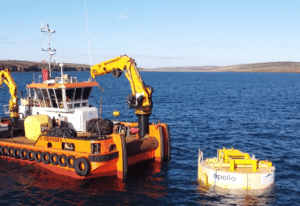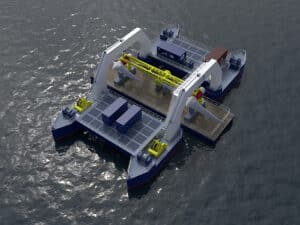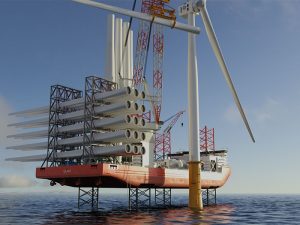
Alaskan wave energy project moves ahead
Written by Marine Log Staff FEBRUARY 12, 2013—A remote Alaskan community moved one step closer to a sustainable energy future, following the approval of a preliminary permit by the Federal Energy Regulatory Commission (FERC) to study a wave energy project in Yakutat, Alaska.
FEBRUARY 12, 2013—A remote Alaskan community moved one step closer to a sustainable energy future, following the approval of a preliminary permit by the Federal Energy Regulatory Commission (FERC) to study a wave energy project in Yakutat, Alaska.
The permit was granted to privately held Resolute Marine Energy (RME), Boston, MA, for its Yakutat, Alaska Wave Energy Project.
RME plans to study the feasibility of developing a wave energy project on a 25-square-mile area within submerged lands off Yakutat, a remote community of about 646 in the southeast portion of Alaska. As presently planned, the project will consist of an array of RME’s SurgeWEC wave energy converters (see iage above) for a total installed capacity of 750 kilowatts. The project would offer an estimated annual generation of over 3,000 MWh.
RME Founder and CEO Bill Staby calls the approval “an important milestone.” Adds Staby, “After several years of research and testing we are finally poised to move forward with a commercial project that will have us providing renewable power to a community.”
RME Senior Engineer and Project Manager Clifford Goudey says, “With this FERC approval we can begin the studies and the planning that are necessary to design the project and to prepare the needed application for a FERC license to operate. We need to characterize the wave resource in detail and engineer a system that will provide the most benefit to the community by alleviating its current dependence upon its diesel-powered generating plant.”
The idea of affordable, sustainable energy would be welcome to the pocketbooks of Yakutat residents, most of whom currently pay $0.55 per kWh, according to Scott Newlun, General Manager of Yakutat Power. “Today we’re totally at the mercy of the price of diesel fuel.”
In December 2012 RME successfully tested its latest SurgeWEC device off the Outer Banks in Duck, NC. The tests demonstrated RME’s novel approach to low-cost deployment and provided performance data over the six weeks of testing. The tests were the final phase of work under an award from the U.S. Department of Energy that helped commercialize the technology.





Leave a Reply
You must be logged in to post a comment.